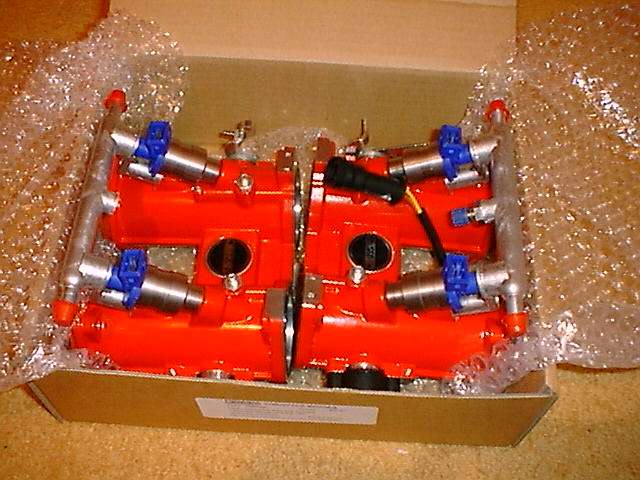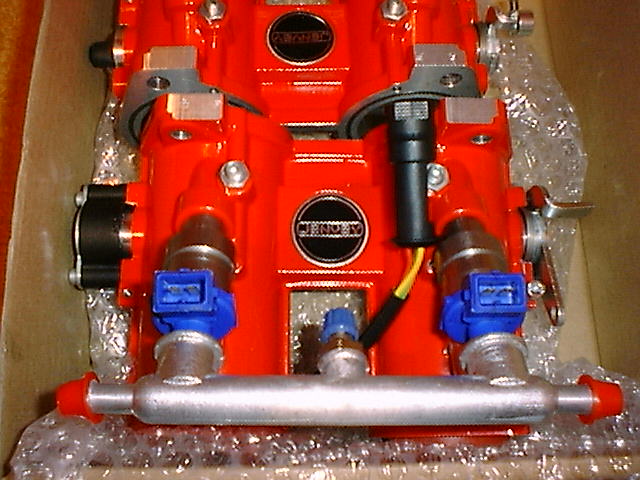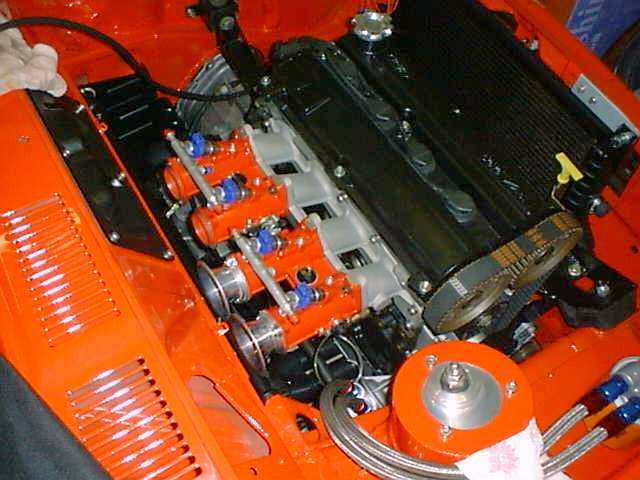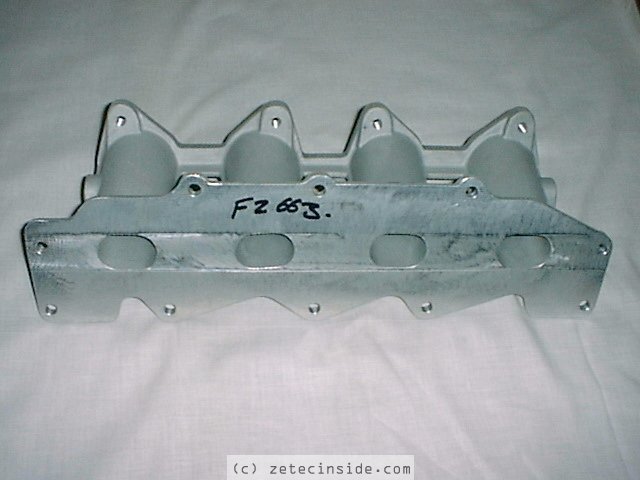Fuel Injection - Page 2
LastJenvey throttle position sensor
In order for the ECU to work, it needs some feedback from the engine. One of the many inputs it requires, is the position of the throttle. ie have you got your foot flat on the floor, or is the engine idling? Fuelling requirements are very different for these two throttle openings, and consequently it is the job of the ECU to adjust the mixture according to the amount of fuel required.So you need to fit a sensor on to the throttle spindle, to allow the ECU to read the position of the throttle. This is accomplished by fitting a Colvern type potentiometer to one of the ends of the throttle bodies. The purpose of the pot is to provide a linear electrical signal to the ECU, proportional to the amount of throttle opening. The Jenvey potentiometer fits directly on to the end of the throttle body, and there is a small amount of adjustment required to 'zero' the pot when fitted. The DTA software, which runs on a standard IBM Compatible PC or Laptop, shows the throttle position on the screen, and allows you to set the stops for 0% and 100% throttle. This only needs to be done once. The ECU then remembers the settings for the future.
Zetec inlet manifold
I bought the inlet manifold from Burton's. Cost is approx £140. Its designed for use with 45mm carbs. Manifold studs were purchased from Halfords, and cost approx 65p each. The manifold is specifically designed for the Zetec engine, and will accept either carburettors or throttle bodies.Jenvey air horns
Air-horns, mounted on the 'intake' of the throttle bodies, channel air through the throttle body and in to the engine. Jenvey recommend that you use long air-horns and long manifolds on the Zetec. Richard Jenvey says has heard of several users that have gone for a really short manifold, short bodies & air horns, and they're 40 BHP down on potential maximum power. So the rule of thumb is 'Longest is best'.Jenvey recommend that you don't have a flat surface directly in front of the air-horns either. As air is drawn in to the bodies, reflections build up in the gap between the bulkhead and the air-horns, and these deflect air away from the air-horns, causing loss of power. So I enclosed the airhorns within a Pipercross foam filter element to help keep the reflections down to a minimum.
Jenvey throttle linkage
Where the two bodies sit side by side on the manifold, the linkage from one body is designed to attach to the linkage of the adjacent body, so that both sets of throttles open at the same time.Because Jenvey manufacture the bodies to fit any manifold, you need to cut the linkage bar that operates the second throttle, according to the distance set between the two throttle bodies. In the picture below, you can see that the bar is too long for my setup, so I need to shorten the linkage to prevent it from hitting the casing of the second throttle body when operated.
Once the linkage bar has been trimmed to the right length, you can fit the two bodies on to the inlet manifold, and assemble the Jenvey Linkage kit. This kit connects the throttle cable between the pedal and the throttle bodies. With the kit are instructions for assembly, and its quite easy to put together.
I bought manifold studs from Halfords, together with red studlock, and fitted the studs to the manifold to allow the throttle bodies to be fastened securely in place.
Fuel Injectors
I was quite surprised to find that Jenvey don't sell fuel injectors. The reason is that there are so many different types available. Richard Jenvey's advice is to get some injectors from a car that produces a similar amount of power. I'm looking for 165BHP as standard, so I need to source some from a manufacturer for a vehicle that produces that sort of power. Probably from a Vauxhall or a BMW. If you go for injectors that are from a vehicle that produces much more HP than you need, then you will end up with a rough idle, but possibly more power at the top end. Conversely, if you end up with injectors too small, you will loose power at the top end, but the idle and bottom end power delivery will be really smooth, up until the point where the injector runs out of capacity.To workout the correct fuel flow rate per injector, Weber use the formula below:
BHP X 5
-------- = injector CC (flow in cubic centilitres)
No Cyls
I have a set of blue and a set of green injectors. The blue injectors are marked as IW030's and they flow 189.4cc/min and were originally specified for 1.6 CVH and 2.0 DOHC engines. They should be alright for approx 165BHP. The next injector in the Weber range, the IW031's, which are green, flow 270cc/min which gives a 4 cyl BHP rating of 216. I am running with these in 2002, and the car was tuned with them fitted, achieving 178 BHP at 6243 rpm. Not bad eh?
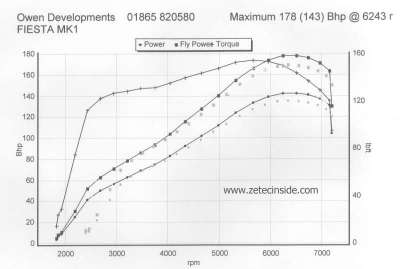
Here are some pictures of the throttle bodies when I first assembled and fitted them, with the blue injectors.

